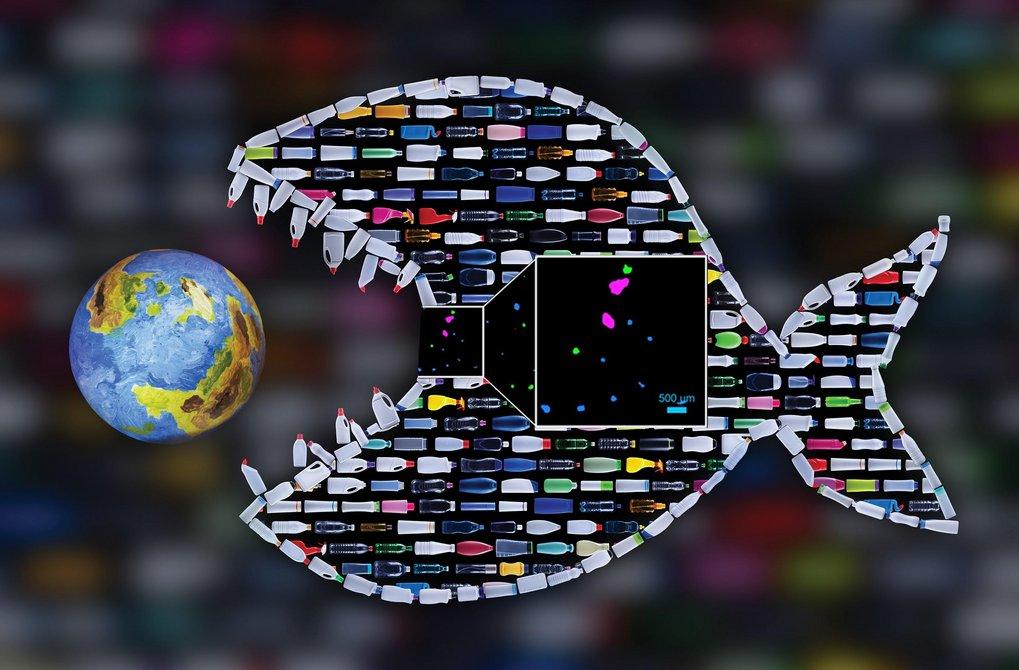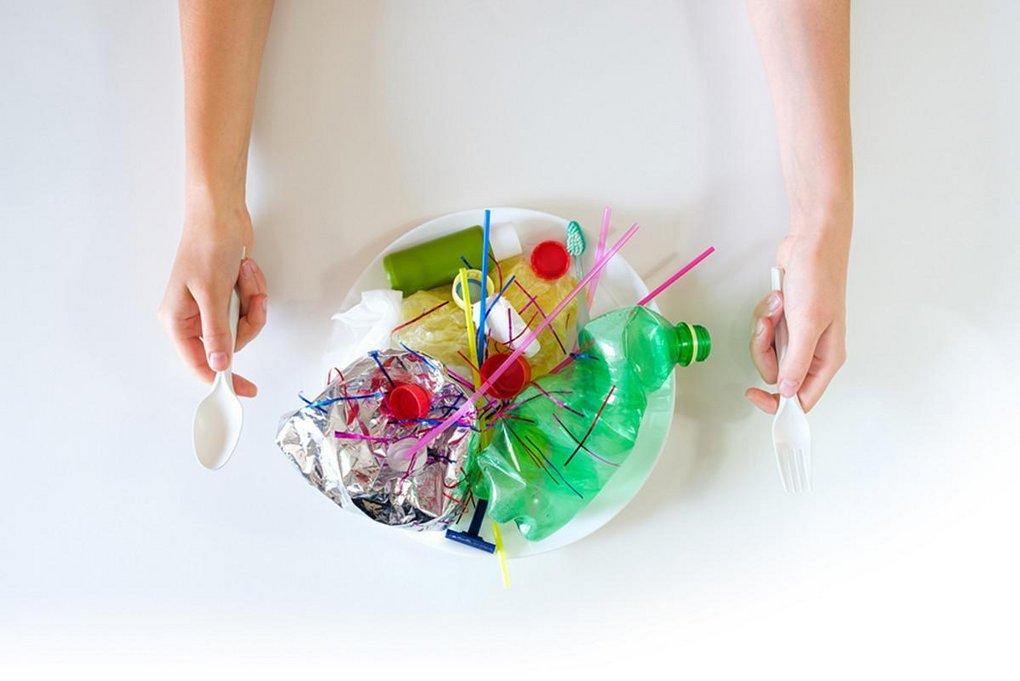As an integral part of our code of ethicsand as a proud member of the UN Global Compact, HORIBA is firmly committed to environmental protection and ensuring a sustainable planet for future generations. Among the multitude of challenges our environment currently faces, as highlighted by this year’s World Environment Day, microplastics stand out as a particularly novel crisis, with impacts that are still not fully understood. In this blog, our goal is to shed light on the magnitude of this issue and showcase how HORIBA technology is contributing to its mitigation.

What are microplastics?
Microplastics are extremely small plastic pieces with a size of 5mm or smaller. They can be divided into two categories based on origin:
- Primary: deliberately constructed microparticles for consumer and industrial purposes e.g., cleaning abrasives, cosmetics or polymer carriers for drug delivery
- Secondary: produced spontaneously upon the wearing down of larger plastic waste
Where are microplastics coming from?
According to a study conducted by the International Union for Conservation of Nature (IUCN) [1], the main sources of microplastics are:
- Synthetic textiles: 35%
- Tyres: 28%
- City dust: 24%
- Road Making: 7%
- Marine Coatings: 4%
- Personal Care Products: 2%
- Plastic Pellets: 0.3%
Alarmingly, a recent Nature study [2] showed that a single clothes wash can release between 640,000 and 1,500,000 microfibres…
To learn more about each of these microplastic sources, visit our website
Where are microplastics?
Unfortunately, microplastics are everywhere. Due to their small size, microplastics spread rapidly via wind and water and as a result, have been found in our homes [3], the air we breathe [4], and even in freshly fallen snow in Antarctica [5].
Not only are microplastics in our environment, but they’re in everything we eat. Microplastics have been found in salt [6], bottled water [7], tap water, beer [8] soft drinks [9], seafood [10], and even in the flesh of fruits and vegetables [11].
Shockingly, recent studies even revealed the presence of microplastics in our blood [12] and in human placenta [13]. One study estimated that an average individual consumes from 39,000 to 52,000 microplastic particles a year with food and drink [14].

What are the problems associated with microplastics?
The biggest problem with microplastics is that they do not readily break down into harmless molecules. Plastics can take hundreds or thousands of years to decompose — and in the meantime, wreak havoc on the environment.
Marine life frequently ingests microplastics, especially biofiltering organisms such as molluscs, ascidians, and zooplankton. Studies have demonstrated that zooplankton exposed to microplastics experience detrimental effects on essential functions, including feeding behaviour, growth, development, reproduction, and lifespan [15]. This is of utmost importance because organisms like zooplankton form the foundation of the food chain and can significantly impact fish populations, ultimately contaminating and affecting the availability of food resources.
While direct studies on the effects of microplastics on humans are lacking, research conducted on mice indicates that microplastics can spread to various organs and tissues, causing biochemical changes, structural damage, and dysfunction [16]. It is believed that the smallest particles have the greatest probability of causing adverse human health effects. For example, studies have already demonstrated the presence of microplastics in human tissues including the placenta [17], but our understanding of the impact of microplastics on human health is still in its early stages.
How can microplastics be detected?
Detecting, identifying, and quantifying microplastics in the environment poses significant challenges due to their small size, varied shapes, polymeric diversity, and vast surface areas that attract chemicals and microbes. While some microfibres can be observed with the naked eye, detecting tiny microplastics requires specialised techniques.
There are five techniques commonly used to detect microplastics:
- Fluorescent staining with Nile Red, combined with fluorescence microscopy
- Scanning Electron Microscopy with Energy Dispersive X-ray Spectroscopy (SEM-EDX)
- Infrared Microscopy
- Raman Microscopy
- Pyrolysis Gas Chromatography Mass Spectrometry (Pyr-GCMS)
How can we characterise PM10 microplastics?
Each technique mentioned above offers unique properties that are well-suited for certain conditions, however many of these characterisation techniques are limited to particles that are 10 micrometers (µm) or larger. Raman spectroscopy, on the other hand, is highly valuable for detecting nanoplastics — PM10 plastic particles that measure below 10 µm in size — and determining their polymer composition. Raman imaging has the resolving power to characterise microplastics right down to 1µm.
This capability is crucial because nanoplastics pose significantly greater risks to living organisms compared to microplastics [18]. They are more abundant and can easily penetrate living cells. However, research on nanoplastics remains limited due to considerable challenges involved in sampling, separating, and detecting these nanoscale particles.
Watch our teaser video to discover exactly how Raman is used to find microplastics!
What can be done about microplastics?
To comprehensively address the problem of microplastics, it is crucial to understand the pollution sources, and the full extent of the scale and impact of these particles. In this regard, it’s crucial to have measurement techniques that can easily quantify and identify the specific types of plastic involved. This knowledge will aid in developing effective strategies to reduce microplastic pollution and mitigate its harmful consequences on both the environment and human health.
HORIBA is committed to addressing this key issue through its product solutions, knowledge and expertise in analytical technologies for microplastic identification and characterisation. It is also involved in the development of ISO/CD 16094-2 which intends to standardise the analysis of microplastics down to 1 µm in water and related matrices using Raman spectroscopy, amongst other techniques.
In the meantime, we can all do our bit to reduce, re-use, and recycle too!
References
- Boucher, J., Friot, D., 2017. Primary microplastics in the oceans. IUCN. https://doi.org/10.2305/IUCN.CH.2017.01.en
- De Falco, F., Di Pace, E., Cocca, M., Avella, M., 2019. The contribution of washing processes of synthetic clothes to microplastic pollution. Sci Rep 9, 6633. https://doi.org/10.1038/s41598-019-43023-x
- Jenner, L.C., Sadofsky, L.R., Danopoulos, E., Chapman, E., White, D., et al., 2022. Outdoor Atmospheric Microplastics within the Humber Region (United Kingdom): Quantification and Chemical Characterisation of Deposited Particles Present. Atmosphere 13, 265. https://doi.org/10.3390/atmos13020265
- Wright, S.L., Ulke, J., Font, A., Chan, K.L.A., Kelly, F.J., 2020. Atmospheric microplastic deposition in an urban environment and an evaluation of transport. Environment International 136, 105411. https://doi.org/10.1016/j.envint.2019.105411
- Aves, A.R., Revell, L.E., Gaw, S., Ruffell, H., Schuddeboom, A., et al., 2022. First evidence of microplastics in Antarctic snow. The Cryosphere 16, 2127–2145. https://doi.org/10.5194/tc-16-2127-2022
- Lee, H., Kunz, A., Shim, W.J., Walther, B.A., 2019. Microplastic contamination of table salts from Taiwan, including a global review. Sci Rep 9, 10145. https://doi.org/10.1038/s41598-019-46417-z
- Li, H., Zhu, L., Ma, M., Wu, H., An, L., Yang, Z., 2023. Occurrence of microplastics in commercially sold bottled water. Science of The Total Environment 867, 161553. https://doi.org/10.1016/j.scitotenv.2023.161553
- Kosuth, M., Mason, S.A., Wattenberg, E.V., 2018. Anthropogenic contamination of tap water, beer, and sea salt. PLOS ONE 13, e0194970. https://doi.org/10.1371/journal.pone.0194970
- Shruti, V.C., Pérez-Guevara, F., Elizalde-Martínez, I., Kutralam-Muniasamy, G., 2020. First study of its kind on the microplastic contamination of soft drinks, cold tea and energy drinks - Future research and environmental considerations. Science of The Total Environment 726, 138580. https://doi.org/10.1016/j.scitotenv.2020.138580
- Rochman, C.M., Tahir, A., Williams, S.L., Baxa, D.V., Lam, R., et al., 2015. Anthropogenic debris in seafood: Plastic debris and fibers from textiles in fish and bivalves sold for human consumption. Sci Rep 5, 14340. https://doi.org/10.1038/srep14340
- Oliveri Conti, G., Ferrante, M., Banni, M., Favara, C., Nicolosi, I., et al., 2020. Micro- and nano-plastics in edible fruit and vegetables. The first diet risks assessment for the general population. Environmental Research 187, 109677. https://doi.org/10.1016/j.envres.2020.109677
- Leslie, H.A., van Velzen, M.J.M., Brandsma, S.H., Vethaak, A.D., Garcia-Vallejo, J.J., Lamoree, M.H., 2022. Discovery and quantification of plastic particle pollution in human blood. Environment International 163, 107199. https://doi.org/10.1016/j.envint.2022.107199
- HORIBA: Microplastics Testimonial. Available at: https://www.horiba.com/gbr/scientific/applications/environment/pages/microplastics/microplastics-testimonial/ (accessed 1st June 2023)/
- Cox, K.D., Covernton, G.A., Davies, H.L., Dower, J.F., Juanes, F., Dudas, S.E., 2019. Human Consumption of Microplastics. Environ. Sci. Technol. 53, 7068–7074. https://doi.org/10.1021/acs.est.9b01517
- Botterell, Z.L.R., Beaumont, N., Dorrington, T., Steinke, M., Thompson, R.C., Lindeque, P.K., 2019. Bioavailability and effects of microplastics on marine zooplankton: A review. Environmental Pollution 245, 98–110. https://doi.org/10.1016/j.envpol.2018.10.065
- Zolotova, N., Kosyreva, A., Dzhalilova, D., Fokichev, N., Makarova, O., 2022. Harmful effects of the microplastic pollution on animal health: a literature review. PeerJ 10, e13503. https://doi.org/10.7717/peerj.13503
- Ragusa, A., Svelato, A., Santacroce, C., Catalano, P., Notarstefano, V., et al., 2021. Plasticenta: First evidence of microplastics in human placenta. Environment International 146, 106274. https://doi.org/10.1016/j.envint.2020.106274
- Sharma, V.K., Ma, X., Lichtfouse, E., Robert, D., 2022. Nanoplastics are potentially more dangerous than microplastics. Environ Chem Lett. https://doi.org/10.1007/s10311-022-01539-1